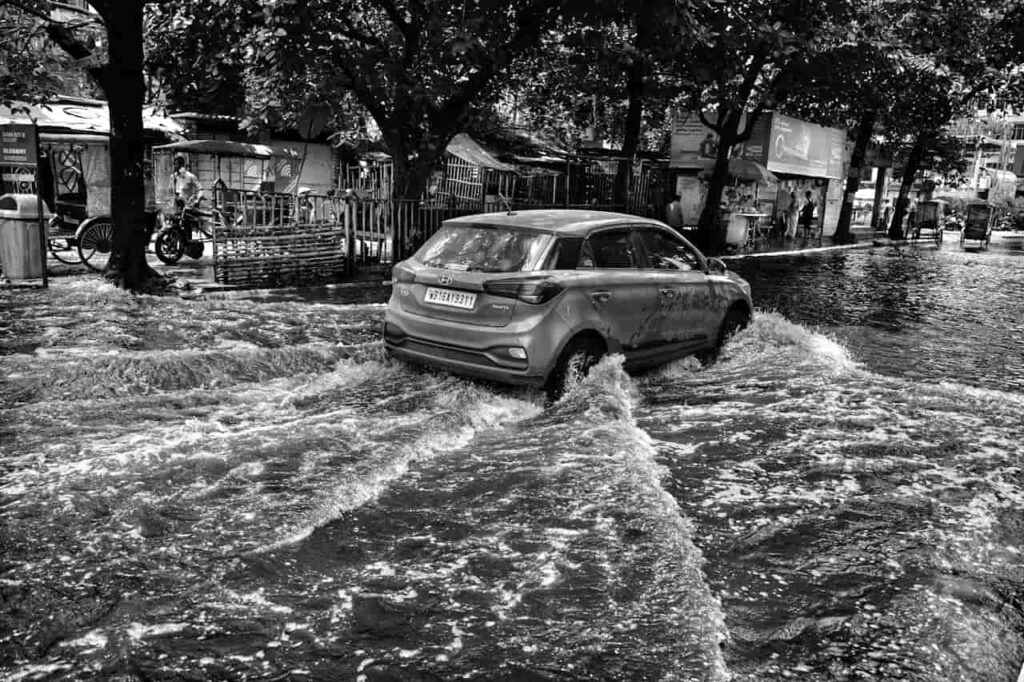When you are buying a car, one thing you absolutely must watch out for is if the car was in a flood. Flooded cars would have a lot of issues. They may look all shiny and clean from outside but inside they have problems that can’t be fixed easily. You don’t end up with a car that will give you headaches and spend money on expensive repairs later on. So how do you check for a flooded car?
Here are some tips to look out for spotting flooded cars.
1. Get a Car Service History Report
First thing you should do is get a car service history report. This is like a little bio of the car. It tells you all sorts of important details like if the car was in an accident or what type of services were done at the service center. You can get these reports from the car dealer itself. If the report says that the services were done for the flood damage just walk away. No need to look further.
2. Check for Water Stains and Dirt at Unusual Places
Next you should check inside the car. Check for water stains or dirt under the seats, inside the glove box and other hidden areas where you would not normally see them. If you see mud, dirt or stains then there are high chances of the car being flooded. Pay extra attention to the carpets. They may look clean but if you pull them up a bit and see dirt or stains underneath it means the car was flooded.
3. Do a Smell Test
This might sound weird but trust me this would be helpful. When you sit in the car, take a deep breath with closed windows. If the car smells like an old damp cloth and that musty smell would mean that the car was flooded at some point. Some sellers might try to cover the smell with air fresheners. If the car is filled with a strong smell of scent then that’s the sign they are hiding something.
4. Check Under the Carpets and Mats
Pull up the carpets and mats to see if the padding under them is wet or has stains. The padding under the carpet might still be wet or have water stains even if the top looks clean. This is especially true if the car was cleaned up quickly after a flood. Check if the floor feels damp or looks discolored. A damp floor can lead to rust and other big problems so check this out.
5. Test all Electronics Inside the Car
Water would definitely hamper all the electronics inside the car. Turn on all the electronics in the car —-lights, instrument cluster, windows, wipers, controls on steering and center console. If something is not working then there is a chance of water damage. Electrical problems can be very expensive and it is definitely a pain to fix.
6. Check the Headlights and Taillights
Headlights and taillights can trap water and would have become foggy so check them out closely. If you see moisture or fogging inside the lights, that means the car was underwater at some point. Even if the rest of the car looks good, water in the lights could be due to water damage. Car headlights and taillights can tell you a lot about the car’s past.
Also find: Get the Best Resale Value Cars in India with Apna Car
7. Open the Hood and Check the Engine
Take a look under the hood. Check the engine for rust, dirt or debris stuck inside. Water can leave behind mud or silt in places you wouldn’t normally see it. Check around the battery, under the hood and in the engine bay. If you see rust or weird dirt, that means the car was in a flood. Also, listen to how the engine sounds when you start it. If it struggles to start or makes weird noises, that’s a bad sign.
8. Check for Rust at Unusual Places
Rust at unusual places is quite dangerous, it is like a slow poison to the car. Check under the car, around the doors and in the car’s boot. Also, check screws and bolts in places like the glove box or under the seats. Rust in those areas could be the car was underwater. A little rust on an old car is normal, but too much rust or rust in unusual places is not good.
9. Check Registration to see if the Car is from Flood Zone
If the car was registered in a flood zone, be extra cautious. Cars from flood zones are more likely to have been in water. A history report can sometimes tell you where the car was registered. Use that information to help you decide if the car might have been in a flood.`
10. Have a Experts to Look at It
If you are still unsure, bring some car experts to check it thoroughly. A good mechanic can see signs of water damage you can’t. They will have the engine, electricals and other details which you will not be able to see easily. It will cost you a bit to check with with mechanic but that would avoid you with expensive repairs later on.
Conclusion
Buying a car is a big deal and you need to make sure you choose the right one. There are all sorts of problems with a flooded car, and it can be expensive and frustrating to fix it later on. Be extra careful and apply these tips and you will avoid buying a flooded car. Trust your instincts and don’t be afraid to leave if you feel something is wrong. There are plenty of other cars, and better safe than sorry.
Also find: Step-by-Step Guide to Applying for a New FASTag for Your Vehicle

